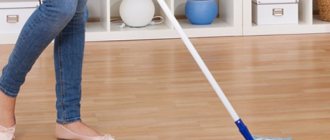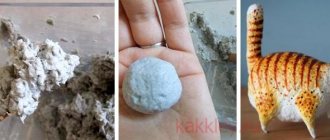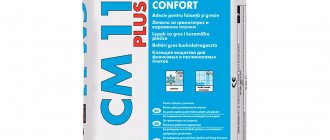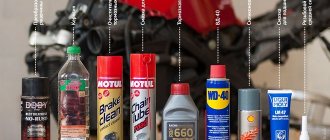Acrylic bathtubs are beautiful, convenient and affordable. But when it comes to keeping this beauty in its pristine snow-white form, housewives have a lot of questions. After all, not all household chemicals are suitable for acrylic! And some are completely unsafe for him! To buy exactly what you need, focus on the rating of the best products for acrylic bathtubs.
Expert's choice:
| Name | Price |
| 1. Cif cream Ultra White | from 200 rubles |
| 2. SANOX | from 50 rubles |
| 3. GraSS Gloss | from 150 rubles |
| 4.Mr. Proper | from 160 rubles |
| 5. XAAX | from 500 rubles |
Mini rating
Acrylic bath products for 2022
Types of cleaning products for acrylic
Cleaning products for acrylic bathtubs are widely available on the market. They are usually divided into 2 groups:
- type;
- in the direction of action.
The first category includes the following household chemicals:
- foam – has a mild effect and is most often recommended for preventive care of a new bathroom;
- gel is a universal soft product that has a wide range of applications;
- liquid - this form of release is most suitable for removing old stains; it is applied to the surface of the bath and left for several minutes for a deeper effect;
- spray - a convenient form, suitable for quick cleaning or removing several stains;
- cream is a fairly popular type of cleaning product that combines softness, safety and effectiveness.
According to their intended purpose, the following compositions are distinguished:
- against rust - used in regions with water oversaturated with metal compounds, and on old bathtubs;
- from limescale – a popular option that gives the bath shine and cleanliness;
- from traces of soap and drops of water - most often manufacturers combine this effect with the previous one, releasing complex effects on the market;
- antimicrobial/antibacterial action - a popular household chemical that protects family members from the growth of unfavorable microflora in the bathroom;
- whitening products are the most common purchase of housewives;
- for shine and radiance - purchased in combination with other cleaning products and used as a preventive measure;
- for cleanliness and disinfection – contains special components that prevent the growth of bacteria.
Important! Most of the products are multifunctional. This allows you to avoid big expenses, but at the same time keep the bowl completely clean, maintaining its attractive appearance.
Conclusions and useful video on the topic
The video compares the effectiveness of traditional cleaning methods (toothpaste and soda-soap solution) with household chemicals:
To maintain the impeccable cleanliness and whiteness of acrylic plumbing, there are many effective means. Available preparations do not always cope with the task, so it is better to use specialized household chemicals created taking into account the characteristics of acrylic plumbing.
Tell us what products and methods you use to care for acrylic plumbing fixtures. Share information on this issue that will be useful to site visitors. Please write comments in the block below, post photos, and ask questions.
Requirements for modern bath cleaning products
Requirements for bath cleaning products
Acrylic is a very capricious material. Therefore, the question “How can I clean an acrylic bathtub?” quite justified. Housewives need to remember that such a bowl does not tolerate the following cleaning products:
- fine and coarse abrasive - it leaves scratches and the surface becomes cloudy;
- chlorine - it corrodes the top layer, turning its structure porous;
- solvents - they destroy the top layers of the coating, deforming the bowl;
- ammonia and formaldehyde - they have the same effect as solvents.
Therefore, household chemicals for bath care should not contain the above components. You should also avoid the presence of various acids.
It is important that the purchased products are safe for humans – mucous membranes and skin.
The best option is compositions with acrylic baths marked on the packaging. They can be used without fear.
Preventing contamination
Compliance with the basic rules for using an acrylic bathtub will save you from unnecessary costs and make it easier to care for your plumbing, prolonging its service life.
№1. Do not soak laundry. The components of washing powders are not always comparable to the polymer coating. In addition, if bright clothes fade, then the bathtub has every chance of “absorbing” the paint. This property of acrylic must be taken into account when washing your hair after “fresh” painting.
№2. Taboo on bathing animals.
Pets' claws will damage the polymer coating. As an option, you can put “anti-scratch guards” on the paws and place the animal on a bedding
№3. Caring attitude. Do not place heavy objects, metal basins, etc. in a plastic tank. They can deform acrylic and leave dents and scratches.
№4. Regular care. The best way to prevent the formation of tubular stains is to clean the bathtub after each bath. Simply rinse the bowl with warm water and remove any drops with a cloth.
If it is no longer possible to tidy up the surface of the polymer plumbing fixtures, it is better to buy and install a new acrylic bathtub or carry out repair work using an acrylic liner. We advise you to read our recommended articles.
Natural products for cleaning acrylic bathtubs, disinfecting and whitening
A good product for cleaning acrylic bowls and tiles in the bathroom is not always purchased. Traditional recipes turn out to be no less effective, and at a much more affordable price. So what can you use from what is “at hand”?
The list of options is quite wide:
- Salt . Select finely ground salt and gently rub it along the inside of the bowl. This option is not suitable for regular cleaning, but is good as an emergency solution.
- Soda. Regular baking soda works great to keep your bathtub white. But you can’t rub it into acrylic. Prepare a paste by mixing baking soda with water and apply it to the stains. After 30 minutes, rinse with water and lightly rub.
- Hydrogen peroxide. It's always in everyone's medicine cabinet, so it's ideal when there's nothing else nearby. Mix peroxide with ammonia in proportions of 1 to 2 and apply the resulting solution to the stains with a sponge. After 10 minutes you can wash it off - the dirt will come off without any effort.
- Lemon acid . With its help, you can clean it no more than once a year. Fill a bowl with warm water and dissolve a 50-gram bag of lemon juice in it. After two hours, drain the water and wipe the bathroom with a soft sponge.
- Toothpaste. Perfectly removes yellowing and plaque. To clean, you need to apply the paste to the dirt with a layer of about 2 mm and wait a quarter of an hour. Afterwards the bowl is washed with plain water.
The nuances of cleaning a bowl with hydromassage
Systems with a hydraulic massage function are equipped with nozzles connected to a compressor and a circulation pump. The technique creates excess pressure of the water flow, which comes out under pressure through the sprayers in the hot tub.
With regular use of the hydromassage option, the nozzles do not have time to dry out - constant humidity provokes the proliferation of microorganisms, mold growth and the accumulation of lime deposits.
Recommended cleaning frequency: if the sprayers are used every day – weekly, if the hydromassage is turned on rarely – monthly. An appropriate disinfectant is selected for disinfection
The procedure for carrying out the disinfection procedure:
- Fill the tank with water so that the nozzles “go” 5-7 cm under water.
- Pour the cleaning concentrate into the bath and turn on the hydromassage for 20 minutes - the liquid should make several circular cycles through the system.
- Drain the water and refill the bowl.
- Turn on the sprayers for 5 minutes and empty the bath.
Upon completion of the procedure, it is necessary to perform standard cleaning of the walls and bottom of the “font”.
How to properly care for acrylic surfaces
In general, acrylic bathtubs are easy to clean. The main thing is to know the basic but important rules:
- use only warm water - even without special products, it can remove fresh stains from acrylic;
- After cleaning, be sure to wipe the bowl dry - microfiber cloths or sponges are suitable for this;
- Don’t forget about polishes - wax-based compounds add the necessary shine and smoothness to the surface of the bowl.
Important! And take care of your safety while cleaning. Be sure to protect your hands with gloves and ventilate the room.
What not to use when cleaning
When cleaning acrylic bathtubs, do not use hard sponges or brushes.
It is not recommended to use powders containing abrasive particles.
Do not use medications containing:
- acetone,
- chlorine;
- ammonia;
- formaldehyde;
- concentrated alcohol;
- alkali;
- acid.
Powdered cleaning agents cannot be used for acrylic bathtubs.
These substances can cause damage to the surface of the acrylic bathtub.
Which product is better to choose for cleaning the bathtub: tips for buyers
The best product for acrylic bathtubs is an individual concept. Each housewife puts her own characteristics into it. Therefore, during the selection process, follow the general recommendations:
- choose compositions suitable for the coating of the bowl (this is indicated on the packaging);
- Follow safety rules when cleaning;
- Do regular preventive maintenance and clean with more powerful products once a month.
And don't be afraid to experiment! To find “your” option, you often have to try 2-3 or even more cleaning products.
How to clean an acrylic bathtub video
How to get rid of minor scratches and other damage?
Even with the most careful use of acrylic sanitary ware, it is often impossible to avoid scratches on their surface. In such damage, lime and rust deposits can accumulate, which immediately visually distinguish these areas from the general background. To get rid of scratches, you can use one of the existing methods for removing them.
Sanding scratches using fine sandpaper
- Shallow scratches can be removed in the same way as single rust spots by treating the surface with fine-grained (P240÷P280) sandpaper. After which the leveled area is polished with a polish specially designed for acrylic.
Polish for acrylic surfaces.
- Sometimes it is quite enough to apply only polish to scratches, without using preliminary abrasive action. The polishing paste is applied and intensively rubbed into the surface using a piece of felt in a circular motion. The process is continued until the scratches and the applied composition are smoothed to the maximum.
Repair kit for restoring damaged acrylic plumbing fixtures.
- If deep damage occurs, a repair kit for acrylic plumbing accessories will help. It is recommended to purchase it along with the bathtub in order to immediately select the closest shade of color - this will be much more difficult to do later. The kit includes a paste-like acrylic compound that hardens when applied to the surface of the bathtub. Fill the scratches with the paste and rub it in in a circular motion using felt until smooth.
The process of repairing an acrylic bathtub using putty.
- With paste acrylic you can even repair through holes in a cast bathtub model, which can also form for one reason or another. To perform this procedure, you must first clean the area being repaired. Next, several layers of high-quality waterproof tape are glued to the outside of the bathtub, which will become a barrier for the paste. Then the resulting hole is filled with liquid acrylic and leveled using a plastic spatula. After which the patch must be left until the paste hardens for two to three hours. Next, the acrylic is sanded with fine-grained sandpaper and polished with a piece of felt.
- The method of pouring acrylic can also be used in cases where it is necessary to remove deeply ingrained stains, after the elimination of which depressions remain on the surfaces.
- Another option for sealing through holes in a bathtub involves the use of polymer putty. They fill the resulting hole with it and wait until it dries completely. After that, acrylic paste is applied on top of the putty and leveled with a spatula. The dried paste is processed with fine-grained sandpaper, then, if necessary, painted, and the final action is to finely polish the area to a perfectly smooth state.
It is quite obvious that, if desired, the owners can not only carry out regular cleaning, but also restore damaged areas of acrylic bathtubs without resorting to the help of a specialist.
Prices for popular acrylic bathtubs
Rules for proper use
The bath does not require serious care, but it is still necessary to follow the rules.
- Periodically bringing the plumbing to a decent condition in 5 minutes - after water procedures, rinse with clean water . Acrylic does not absorb dirt, so this type of washing is sufficient.
- After use, wipe the bathtub with a sponge and soapy water . Next, dry to avoid streaks.
- restoration kits for removing scratches - they are sold in hardware stores.
Laundry soap
A universal cleaner for all surfaces. Using laundry soap, you can prepare a cleaning gel that effectively removes stubborn dirt and whitens yellowed areas. To do this, grate the soap and dilute it with warm water to a thick, uniform consistency. Add 1 - 2 tbsp. l. soda and mix well until it dissolves, apply with a sponge. The exposure time of the product is from 15 to 60 minutes.
Soda and mustard
Combine soda and mustard powder in equal parts, add warm water and stir until the soda dissolves. The resulting slurry is used to treat rusty and yellow areas and leave for 30 to 60 minutes.
Vinegar and hydrogen peroxide
Vinegar and peroxide are mixed in a 3:1 ratio and applied with a sponge or spray bottle. After 15 minutes, wipe the treated area with a napkin and rinse with water.











